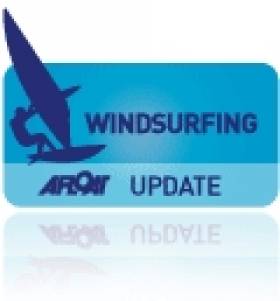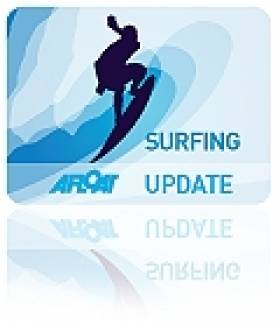Displaying items by tag: Brandon Bay
Maharees Conservation Association Teams up with NIVEA To Clean up Brandon Bay, Dingle Peninsula's Biggest Beach
Brandon Bay, the Dingle Peninsula's largest beach, is set to receive a much-needed makeover today as the Maharees Conservation Association hosts its second annual NIVEA Beach Clean.
Countless volunteers are expected to descend upon the popular destination, armed with gloves and rubbish bags, in an effort to rid the beach of litter and preserve its natural beauty for locals and visitors alike.
The event, which aims to raise awareness of the importance of keeping our beaches clean and free from pollution, is part of a wider initiative by the Maharees Conservation Association to protect the environment and promote sustainable living.
"We're thrilled to be hosting our second NIVEA Beach Clean here at Brandon Bay," said a spokesperson for the association. "Last year's event was a huge success, and we're hoping to build on that this year. It's incredible to see so many people coming together to make a positive difference to our environment."
Indeed, with concerns about plastic pollution and its impact on marine life growing by the day, events like the NIVEA Beach Clean are more important than ever.
By working together to tackle the problem of litter on our beaches, we can help to ensure that future generations can continue to enjoy these natural wonders for years to come.
Car Stolen While Couple Goes Surfing In Kerry
#CarTheft - Gardaí have asked the public to be on the lookout for a black Peugeot 207 that was stolen from a Northern Irish couple while they were surfing in Brandon Bay on Friday 13 March.
As The Irish Times reports, Kevin McCullagh and Oonagh Monaghan returned from their surf lesson on the Kerry beach to find that their car, which they had parked nearby on the quiet strand, was gone - and with it all their belongings.
Tralee gardaí are seeking the whereabouts of the black Peugeot 207 hatchback with the UK registration JHZ 7328.
Storm Chase Mission 2 Abandoned At Last Minute
#Windsurfing - Mission 2 of the Red Bull Storm Chase to Galicia has been abandoned at the last minute due to an unstable weather forecast for the coast of northern Spain.
It's a big blow to the six waveriders who qualified for the second-stage of the global windsurfing challenge after three rounds of exciting competition in Brandon Bay less than two months ago.
The storm-force winds that swept the Kerry coast at the end of January provided the perfect conditions to test the mettle of the brave sailboarders who took to the water at the 'Dumps' ad 'Hell's Gate'.
Of the ten-strong field, six survived to advance to the second round - Marcilio Browne, Dany Bruch, Victor Fernandez, Robby Swift, Julien Taboulet and Thomas Traversa.
And Red Bull have posted a video compilation of highlights of all the action from Mission 1 in Kerry, which you can see below:
Windsurfers Race to Kerry for Red Bull Storm Chase
#Windsurfing - Due to 2012's calm storm season, organisers of the Red Bull Storm Chase recently extended the competition into this year - and competitors are currently racing to Ireland for the first mission of the contest.
Brandon Bay in Kerry was decided as the spot early this morning, and the competition is scheduled to begin just after sunrise tomorrow (Monday 28 January) when stormy weather conditions are expected to be at their peak.
The Red Bull Storm Chase website has live updates from competitors making their way to Kerry from as far away as the Marshall Islands in the Pacific Ocean.
Ten windsurfers chosen by community vote will take part in the first mission, with the top six going on to the second mission some time before 22 March at any one of seven possible destinations around the world, most of which have not before taken centre stage on the windsurfing scene.
Sadly no Irish windsurfers will be competing this time round, but names the likes of Timo Mullen and Dan Gardner on the shortlist will surely be keeping an eye on the competition as they get set to chase the ride of their lives.
Cold Water Surfers Catch The Waves At Brandon Bay
#Surfing - Check out this beautifully shot video from ONITmedia of intrepid winter surfers catching the breaks at Brandon Bay, Co Kerry.
The waves might not be the biggest that Ireland has to offer at this time of year - for those the wet-suited warriors head to Mullaghmore - but the stunning scenery, not to mention the surprise appearances by local cetaceans, more than make up for it.




























































